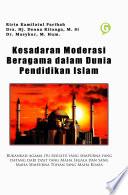
Amélioration de l'offre de service d'un E-banking
Une perspective d'optimisation de la satisfaction client
Dans un secteur ou la concurrence est sans cesse croissante, comme le marche bancaire gabonais, la reussite d'un nouveau service/produit n'est plus garantie par les seules etudes initialement realisees (Management par l'avale). Le constat est que, de facon generale, de nombreux produits ou service sont lances chaque annee et bon nombre d'entre eux assurent un retour d'investissement satisfaisant. Il devient, de plus en plus necessaire, pour les organisations ambitieuses de mettre en place des programmes d'etudes post-lancement du service (la gestion des reclamations/ le suivi de la satisfaction-client), leur permettant d'avoir les informations reelles sur le niveau d'adoption du nouveau service/produit aux exigences de la clientele et d'orienter objectivement leurs actions correctrices. Cet ouvrage propose une revue de la litterature sur la notion de l'E-banking, sur le construit de satisfaction-client et est conforme aux exigences de la methodologie de la recherche. Il concerne, de ce fait, les professionnels, les enseignants et les etudiants du marketing management.
- ISBN 13 : 9783838180502
- ISBN 10 : 383818050X
- Judul : Amélioration de l'offre de service d'un E-banking
- Sub Judul : Une perspective d'optimisation de la satisfaction client
- Pengarang : Jean Philippe Nsome Nleme,
- Penerbit : Editions Universitaires Europeennes
- Bahasa : de
- Tahun : 2012
- Halaman : 88
- Google Book : http://books.google.co.id/books?id=sl9nLgEACAAJ&dq=intitle:E-Banking+Management&hl=&source=gbs_api
-
Ketersediaan :
Dans un secteur où la concurrence est sans cesse croissante, comme le marché bancaire gabonais, la réussite d'un nouveau service/produit n'est plus garantie par les seules études initialement réalisées (Management par l'avale).






